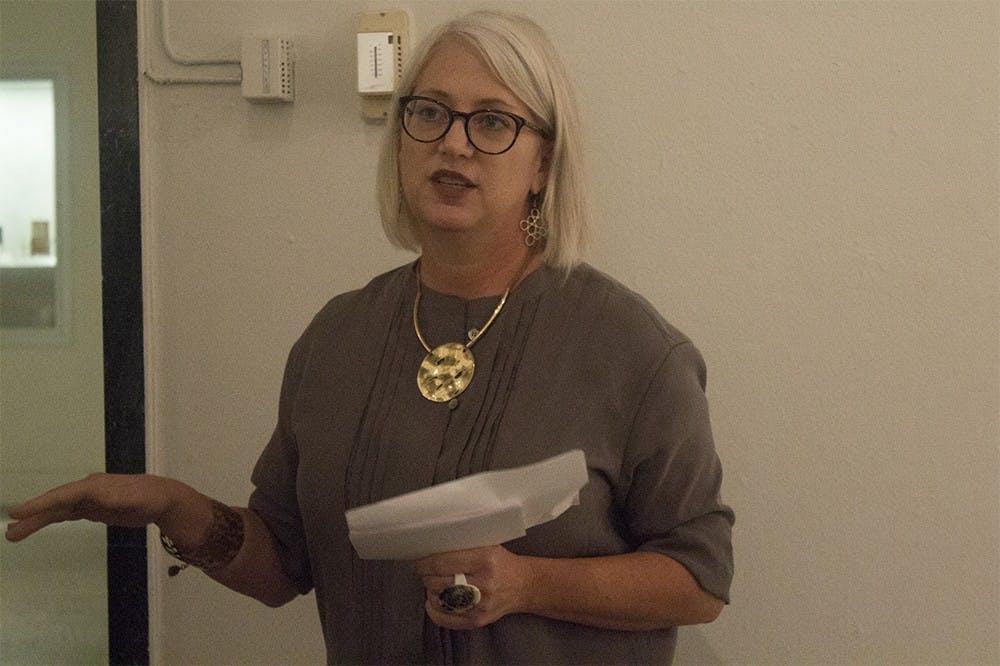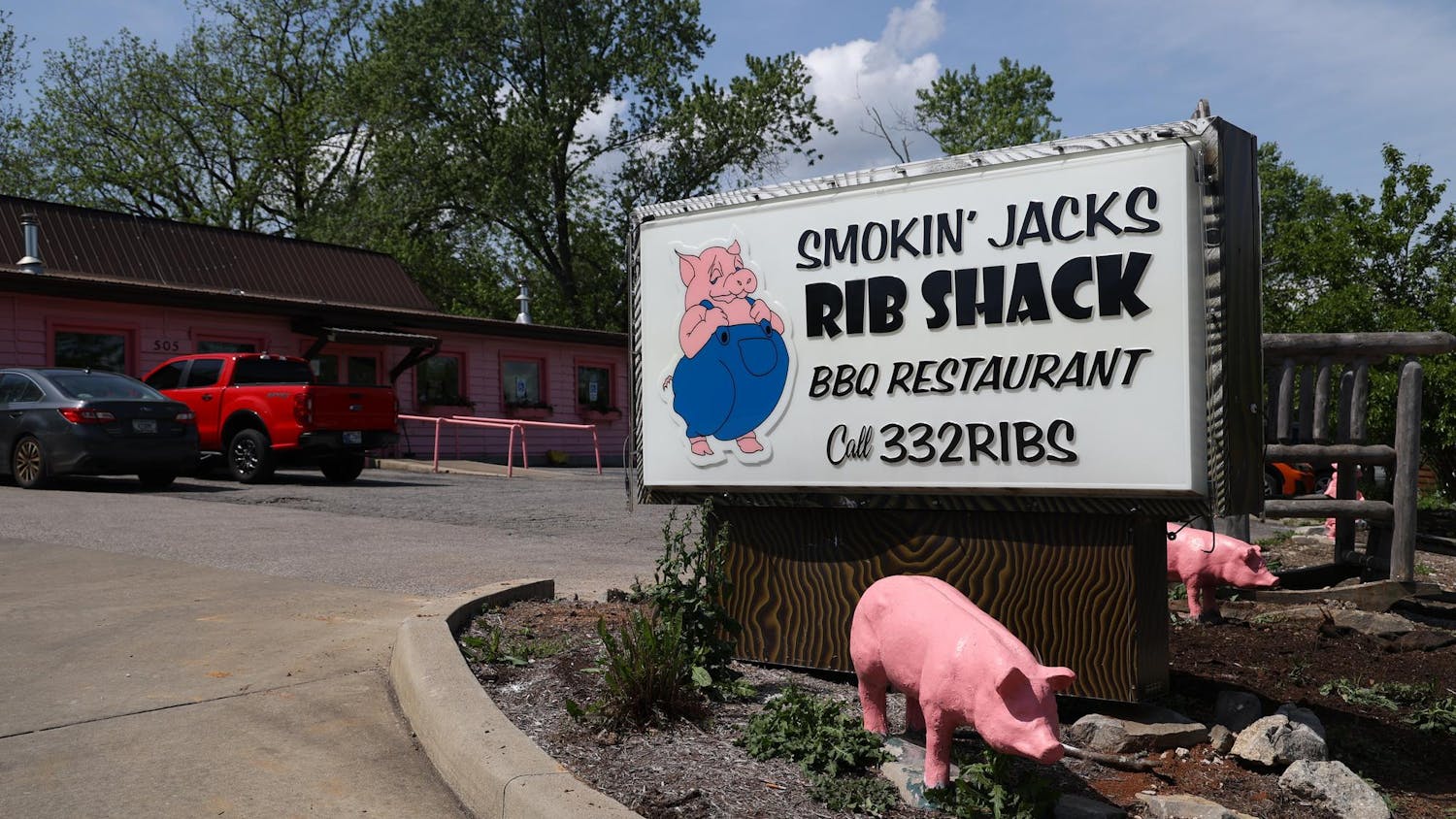One such professional is Kelly Richardson, curator of the Sage Collection and professor in the School of Apparel Merchandising and Design. On Friday, Richardson delivered a lecture in the gallery, surrounded by Halston originals, in conjunction with the exhibition.
Richardson addressed all three aspects of the theme “Halston: Line and Legacy.” She started with historical background on Halston himself, from life on the family farm to his early work with costume and hats.
“Supposedly, when he was 13, he made a hat for his mother for Easter Sunday,” Richardson said. “It incorporated a gold metal pot scrubber and, apparently, everybody really loved the hat — nobody could figure out what material it was.”
In 1962, Halston won the Coty Award for his millinery, or hat, work. Richardson added in an aside that one of the players in the Coty Awards, Eleanor Lambert, was also a native Hoosier.
Richardson said Halston made one of the first commercial deals in the fashion history while attempting to maintain control of his brand by licensing his name out to a variety of products.
“His parent company really wanted to make more money, so they entered into a deal with J.C. Penney,” Richardson said. “He thought that that was fine, it didn’t go against any of his values or image. He said, ‘You know me, I’m as American as apple pie.’”
His designs for the department store were lower-priced versions of some of the styles on display at the Grunwald, Richardson said. The decision to go commercial was unpopular among the designer’s early supporters.
“The day before the J.C. Penney collection launched in ’83, there was a series within one year of three buyouts of the company,” Richardson said. “Over and over again, Halston got further from the level of control. He didn’t like the corporate control.”
This led to the end of Halston’s formal design career and, in 1992, the designer passed away after complications related to AIDS.
The second part of the talk focused on line and legacy, the other part of the exhibit.
Richardson said Halston’s designs were revolutionary because of the close attention and care his clothes gave to the woman’s body.
“He preferred a really timeless, ageless approach,” Richardson said. “He made clothing for women, not for girls, and really had respect for ages, sizes and trying to make his clients look good.”
Halston was also a champion of diversity in the fashion world, Richardson said.
“He was really a leader in using African-American and mixed race models as well as plus-sized models and sales staff,” Richardson said.
Fashion students and faculty came out to listen to Richardson’s talk and enjoy the celebration of such a famed designer. Sydney King, an apparel merchandising student, said Halston’s designs have always resonated across eras because of their construction.
“It’s so interesting how he doesn’t really use any closures,” King said. “His ties and wraps are something that really makes his work timeless, which is something you can’t say about the fast fashion we have going on right now. Everything is in and out of style in weeks.”
Jessica Ivetich, who is pursuing a major in journalism and a minor in fashion design, said her studies in fashion have narrowed her focus and appreciation of the finer points that set Halston apart as a designer.
“To the average individual, his work would seem beyond simple and you’d wonder why is this such a big deal,” Ivetich said. “The fabrics he uses are incredible, and the attention to the small details — now that I’m in these classes and I’m learning to do these kind of things myself, the seams that are absolutely flawless are incredible.”






